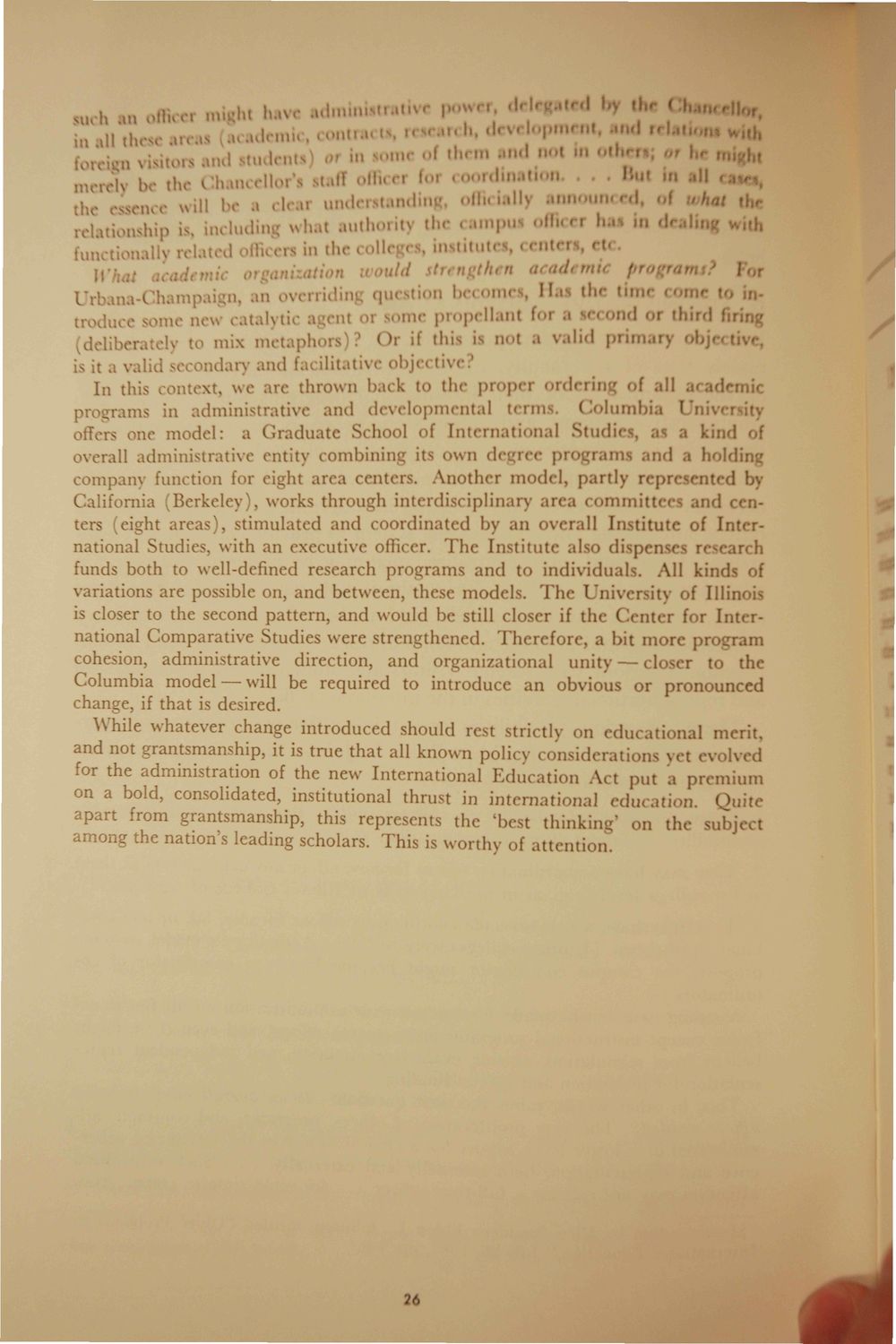| |
| |
Caption: Planning Report - Future of International Programs (1968)
This is a reduced-resolution page image for fast online browsing.

EXTRACTED TEXT FROM PAGE:
in a n t h hh m officti might have .uliiiin ai :s P™ n ht t i n pm< ! h ,L ' ft h lew udcnts) *»« niicl r r b i l ;„ m l ihrm and n»i in oihi r I migh .tafl ollicci foi Imat Bui in II ca m r r c h b the Chan . U l u i , clcai unclc-rscincliiii ofliciall) nun I I u th t] relate , j l i p is, Imiiin; wh.it authority the campui oflim I tn dealing v h in the« .Ilcvrx, institute ntcn ct< ,/ n • </"'•• prop lor y, ia.ch n, an overrid |ucstion b >mt Hal the time me I iJytic nt propellant foi « d 01 third firing >m, riev is Or if tins is not a valid primary objecth H . M n u x met is it a vali< >ndarj ind f iiitativ* bje< tiv( In th mtext, we arc thrown back to the propei Irrini; of idcmi programs in administrative and developmental t ms. Columbia I'nivrrsit Fcrs one model: a Graduate School of International Studii | a kind of overall administrative entity combining its own degree program* and a holding mpany function for eight area centers. Another model, partly represented b ilifornia (Berkeley), works through interdisciplinary area COmmitl I centers (eight areas), stimulated and coordinated by an overall Institute of International Studies, with an executive officer. The Institute also dispen s r eareh funds both to well-defined research programs and to individuals. All kinds of variations are possible on, and between, these models. T h e University of IIlin< is closer to the second pattern, and would be still closer if the Center for International Comparative Studies were strengthened. Therefore, a bit more program cohesion, administrative direction, and organizational unity — closer to the Columbia model — will be required to introduce an obvious or pronounced change, if that is desired. While whatever change introduced should rest strictly on educational merit, and not grantsmanship, it is true that all known policy - nsiderations yet evolved for the administration of the new International Education Act put a premium on a bold, consolidated, institutional thrust in international education. Quite apart from grantsmanship, this represents the 'best thinkin cm the subject among the nation's leading scholars. This is worthy of attention 26
| |